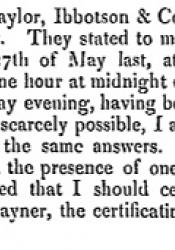The 1833 Factory Act
During the Industrial Revolution, child labor was utilized throughout England, primarily London, which became an industrially centered economy. Prior to 1833, children of all ages were not only used to work in the presence of dangerous machinery but were expected to so they could help supply for their families. The 1833 Factory Act was passed to address concerns about the education of children, as well as their safety and exhaustion. This act decided that children from the ages of nine to twelve were prohibited from working more than nine hours a day. Children of the ages thirteen to seventeen years of age were permitted to work no more than twelve hours a day (National Archives). There were also “factory inspectors” that were placed in each factory, usually one per shift, who ensured that the maximum amount of work hours was not being exceeded amongst child workers (UK Parliament). Though this act advocated for an easier workplace for children, a nine-hour workday for a nine-year-old child was still exceptionally exhausting and harmful to the child worker’s health. The inspectors, though mandatory and meant to ensure safety in the factories, did not usually ensure the child workers nor the adult workers were receiving proper work breaks (Encyclopedia Britannica). The act was a legal push in the correct direction for worker’s rights, though its effect was minimal and child labor continued in the industrial London for decades.
“Child Labor.” Encyclopedia Britannica, https://www.britannica.com/topic/child-labour#ref171559.
“The 1833 Factory Act.” The National Archives UK, https://www.nationalarchives.gov.uk/education/resources/1833-factory-act/.
“The 1833 Factory Act.” UK Parliament Archives, https://www.parliament.uk/about/living-heritage/transformingsociety/livi....

